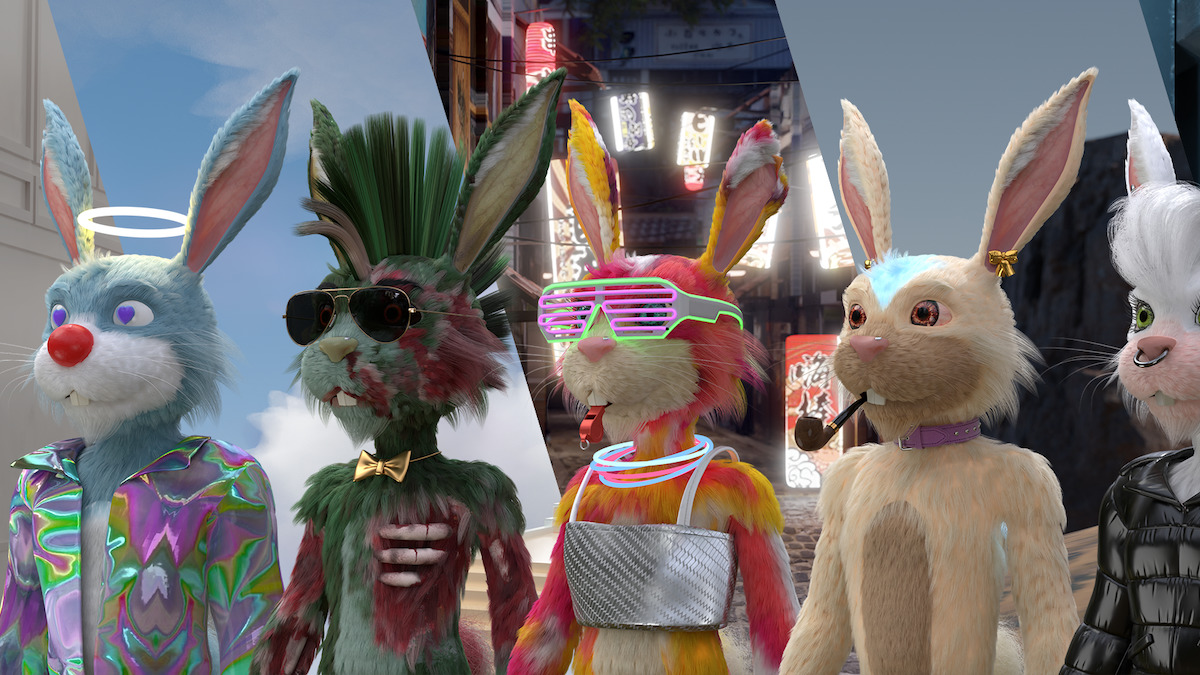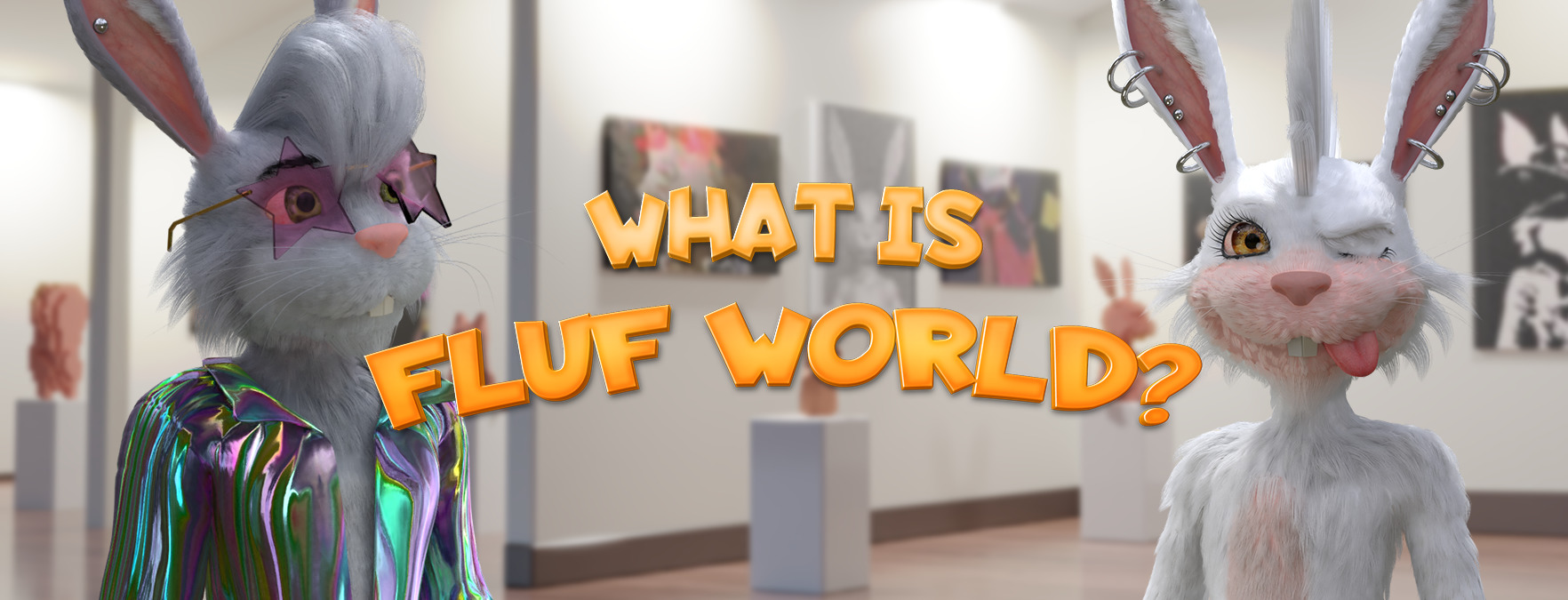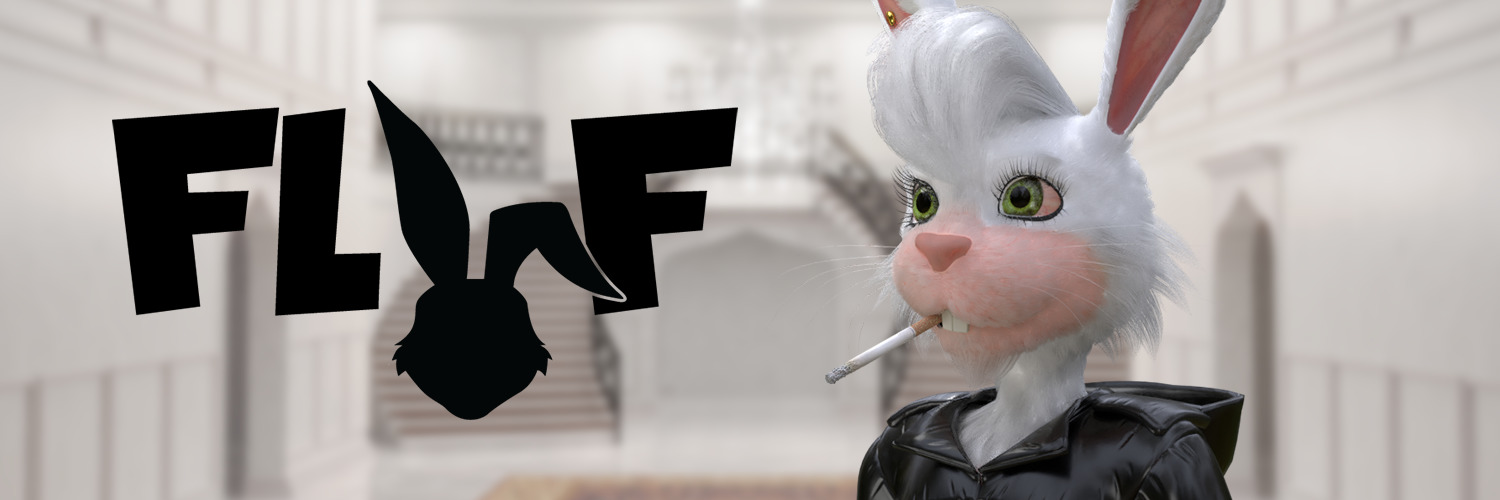FLUF World: 3D rabbit avatars created by Kiwi team total US$42 million in sales in 5 weeks

These 3D rabbit avatars created by a Kiwi team are selling for thousands of dollars on Opensea. (Supplied)
A Kiwi team has been the latest to strike it rich on the NFT craze, collecting more than US$4.1 million (A$5.6 million) in Ethereum with a series of three-dimensional rabbit avatars bopping out to music.
The creation of Auckland-based creative studio Non Fungible Labs, FLUF World sold out within 40 minutes at launch last month.
Nearly 10,000 “flufs” were available for minting for 0.09 Ether, netting the team 889.29 Ethereum (US$2.9 million, or A$3.9 million).
Yesterday the Flufs were selling on Opensea for a minimum of 0.53 Ether, with the team receiving industry-standard five per cent royalties on each sale. NF Labs has gained another 580 Ether (US$1.8 million, or A$2.5 million) in such trades to date, a publicist said.
The most expensive sale was a silver female FLUF in a mansion, which changed hands for 33 Ether (US$105,000) about six hours after being minted on August 8, and is now listed for 10 times that.

Top @FLUF_World Sales:
1. #158 (Silver Fur) – 33 ETH
2. #4997 (Gold Fur) – 25 ETH
3. #6305 (Silver Fur) – 19 ETH
4. #7060 (POTA Lanyard) -18 ETH
5. #8168 (POTA Lanyard) -15 ETH
6. #1807 (POTA Lanyard) -15 ETH
7. #7129 (Hirst Fur) – 11.2 ETH
8. #7896 (Demon Mask) – 11.11 ETH pic.twitter.com/vAkIjgx6Xl— Dan Freebairn (@KickPosters) August 9, 2021
Overall FLUF World has seen US$9.18 million in nearly 3,200 secondary market sales in the past 30 days, according to NFT-Stats, making the NFT collection the 69th most popular globally by trading volume.
There’s been a total of US$42 million in primary and secondary market sales, the publicist said Friday.
NF Labs says that 10 per cent of all revenue generated for the company for the project will be donated, with US$420,000 earmarked for charity so far.
“It’s really important to us that the governance of our charity funds is led by the FLUF World community,” said Alex Smeele, Non-Fungible Labs’ managing director.
“We communicate with our users through the ‘Discord’ [chat] platform and we are working through the process of how to assign the $420,000 we’ve raised so far,” he says.

What is FLUF World?
While early avatar NFT projects involved static, low-resolution 2D images, the FLUFs are high-resolution 3D rabbit-like creatures that feature in 32-second videos.
I am literally shaking #fluf pic.twitter.com/zOrX2aLapE
— Nikita B (@nktbbv) August 8, 2021
A core team of 10 people were involved in the project: two directors, two founders, three developers, two artist/animators and one musician, Tom Lee, half of the electronic DJ duo “Lee Mvtthews.”
FLUF World was conceived in early May and scaled up in late May and early June, culminating in the mint on August 8.
Still, NF Labs said they were astonished at just how big this project blew up into in a matter of hours, creating an online frenzy as collectors scrambled to secure the FLUFs.
Among the first to own them was American DJ Steve Aoki and NFT VC investor G Money.
Legendary retired All Black Dan Carter, who is working on his own NFT project, also bought his first FLUF over the weekend.
For those who are new to NFTs, what the successful projects offer is not just a digital image but a community of like-minded souls who chat in private Discord channels.
So many great people joining the #Fluf community – 3,400 people from all over the world, organic growth, real fans… Even the odd sporting legend…@DanCarter stopping by the discord earlier tonight to ask the crew what his first fluf would be… https://t.co/dSRa21PFxG
— Brooke Howard-Smith SXSW Sydney 🔜 (@Brooke_hs) September 11, 2021
For example, members of the community have produced more than 40 different remixes of Lee’s 20 different 32-second songs he produced for the project. Gino the Ghost, a multi-platinum songwriter, produced one.
“What we love about decentralized digital assets such as NFTs is that the power and ownership remain in the hands of the collectors,” said co-founder Aaron McDonald.
“Even more exciting is the way you can customize and use your FLUFs.
“Owners can name them, and give them a backstory and soon will be able to take them to a digital dance party, download their favourite DJ track or take them into a gaming room.
“FLUFs are truly interactive media channels, avatars you can take with you into the future of the metaverse,” McDonald said.

What’s next for FLUF World
Even more ambitious plans for FLUFs are in the works, including the ability to travel between different virtual worlds.
“In the near future your FLUFs will be able to breed, distribute their newest music and content to their fans, or even play in games,” says co-founder Brooke Howard-Smith.
“We are partnered with some pretty exciting people around the world to make this happen.”
FLUFs inventor Jesse Metcalfe says he’s proud of the success of the project and that NZ is competing on a global stage.
“It made sense to launch this project from New Zealand. We have some of the leading digital artists and AI developers right here. We are natural innovators and explorers, and the metaverse is our next destination,” he says
Related Topics
UNLOCK INSIGHTS
Discover the untold stories of emerging ASX stocks.
Daily news and expert analysis, it's free to subscribe.
By proceeding, you confirm you understand that we handle personal information in accordance with our Privacy Policy.








